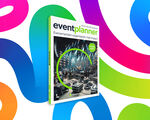Being data-wise and making event-related decisions based on your attendees’ profile is not something to do on a whim. It's the same thing as understanding the needs of your potential customers before launching a product.
Events should deliver answer, solutions, and knowledge that will help the audience experience self-actualization and positive transformation. However, you can’t deliver those without knowing your audience’s needs and expectations.
Luckily, as Skift researcher Greg Oates pinpoints, "Event tech companies are getting better at providing data that CMOs and planners can actually understand, leverage, and build on to design offline and online engagement more strategically.” Oates explains, “Many meeting owners and planners crave as much data as possible to better personalize event design."
Having access to information about your attendees' demographics, preferences, and needs is essential in segmenting the audience and crafting personalized event experiences. That's why recommendations such as "adjust the event to your attendees' needs" or "focus on your guests' burning pains" are so common these days.
However, as Oates argues, in terms of data gathering, "we haven't yet tapped the full potential of event tech", meaning we can't just run an app and miraculously find out more about future attendees' wants and needs. We need different data sources. To help you with that, we put together a list of steps on how you can gather more information to better understand your attendees' preferences and needs.
Step 1. Do some social media sleuthing before, during, and after the event
Be aware of what your (potential) attendees are talking about on social media. Do some research and find out what are the most engaging hashtags, popular topics, and relevant discussions.
Check out what the industry influencers are worried about and their followers' opinions or reactions. Immerse yourself in deep social media research and gather as much data as possible. This will help you make a comprehensive list of hot topics, reactions and interests, important influencers (whom you can subsequently invite to your event), etc. Having this data, you’ll gain the necessary insights to plan and run an event focused on your target group’s current needs, preferences, and interests.
Step 2. Run surveys and interview your potential attendees
Let’s say you want to write a useful eBook to empower your clients. You have a ton of information, but you’re not sure which information is most relevant to your potential readers. Sending prospective readers a survey to ask their opinion sounds like a viable option, doesn’t it?
So why not do that for your next event? If you already have a mailing list from your previous event and these people are your main target group, ask them what they think your next event should be about. Even just a few responses could give you valuable insights about your guests’ preferences or problems, letting you align your upcoming event with people’s expectations.
Step 3. Leverage data from previous events
What do you do with all the data you’ve gathered in the past? Probably just archive it, right? Instead, why don’t you try to analyze it and draw conclusions from it, and check it as needed? If you use event management software or app, be sure to understand how you can track your attendees and how data gathering works.
Step 4. Set up a smart registration form
Be wise when deciding the fields for the registration form. If done correctly, this form will help you learn more about your audience. Let’s say that you’re planning to replace traditional networking sessions with a series of B2B meetings for your guests. To assure the success of this dynamic, introduce a field in the registration form asking people what are they looking for or what they have to offer at the event. This information will help you schedule the right meetings between the right attendees, matching the offer with the demand.
Step 5. Live poll people during the event
One of the best ways to truly understand your attendees is by conducting live polls during presentations. Decide what type of data you’d like to gather and plan a series of questions (with multiple answers). Then, ask the moderator (or the speaker) to run a live poll during the presentations and encourage people to answer the questions. Depending on your questions, you’ll have the data to improve your attendees’ experience and, perhaps, run an even better event next time.
Final thoughts
There are multiple ways of gathering data about your (potential) attendees’ preferences and needs. From live polls to pre-event surveys, you have a series of tools to learn everything you need about your audience. The challenge now is to decide what type of information you’re looking for and how this will help you offer better experiences to your attendees.








